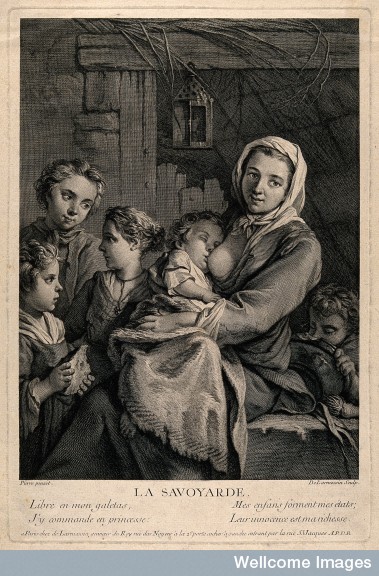
Breastfeeding Mothers and Milk in Shakespeare
Dr Victoria Sparey
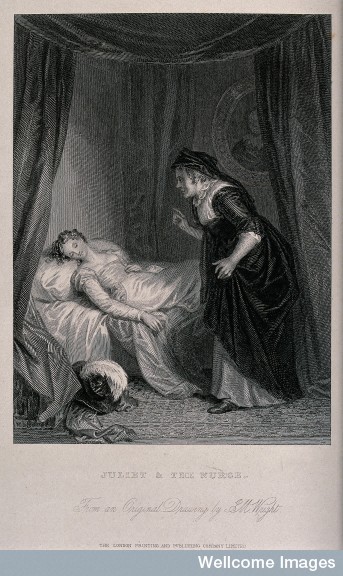 Many of Shakespeare’s characters are described in terms that relate to milk and infant feeding. In Titus Andronicus, Lavinia considers whether pleas for mercy will save her from being raped by the Queen’s sons, who ‘even at thy teat…hadst thy tyranny’ (2.3.145); Act 2, Scene 3 of Romeo and Juliet consists of the Nurse’s account of Juliet’s weaning (we hear how Juliet was weaned after three years, that wormwood was applied to the breast, and that an earthquake accompanied the event); in The Winter’s Tale, Leontes angrily tells his wife that he ‘is Glad [she] did not Nurse’ their son as he removes the son (aptly called Mamillius) from his mother’s presence (2.1.56); Lady Macbeth’s murderous resolve orientates around the image of exchanging ‘milk for gall’ (Macbeth 1.5.55). The list goes on.
Many of Shakespeare’s characters are described in terms that relate to milk and infant feeding. In Titus Andronicus, Lavinia considers whether pleas for mercy will save her from being raped by the Queen’s sons, who ‘even at thy teat…hadst thy tyranny’ (2.3.145); Act 2, Scene 3 of Romeo and Juliet consists of the Nurse’s account of Juliet’s weaning (we hear how Juliet was weaned after three years, that wormwood was applied to the breast, and that an earthquake accompanied the event); in The Winter’s Tale, Leontes angrily tells his wife that he ‘is Glad [she] did not Nurse’ their son as he removes the son (aptly called Mamillius) from his mother’s presence (2.1.56); Lady Macbeth’s murderous resolve orientates around the image of exchanging ‘milk for gall’ (Macbeth 1.5.55). The list goes on.
Faced with such milky moments in Shakespeare, we might see breastfeeding as powerful metaphor and leave it at that. A reading of Goneril’s denigration of her husband as ‘milk-liver’d’ in King Lear might, for example, identify milk as a feminizing substance, a useful means for articulating emasculating cowardice or, by contrast, unwavering determination might be signaled when no milk is present (4.2.52). So, while Goneril accuses her husband of unmanly inaction, Lady Macbeth is disassociated from this feminizing substance in her masculine resolve. Such readings would be based upon the simple assumption that association with milk is feminine, while dissociation from milk is masculine. These readings are not wrong per se, but this approach to all bodily language in Shakespeare rather misses a key question for anyone interested in the early modern period: why are milk-orientated images so powerful in Shakespeare? A historicized answer to this question reveals that any ‘simple’ assumption about the metaphorical qualities of milk does not fully appreciate the humoral doctrine that underpinned early modern medical knowledge.
Readers of this blog probably know that the proportion in which the four humours (blood, phlegm, yellow bile and black bile) existed in the early modern body was thought to influence the individual’s body and mind. A physical reality was thought to underpin an emotional state. As a substance of the humoral body, breast milk was accordingly understood to shape the physicality and mentality of the suckling child. As Thomas Raynalde observed, ‘affections and qualities [of the nurse] passeth forth through the milke into the child, making the child of like condition and manners.’[1] Medical writers regularly presented concerns regarding a situation that saw the humoral properties that underscored the selfhood of one person (the mother/nurse) contribute to shaping the selfhood of another (the child). Care was, for example, urged in choosing a healthy and moral wet-nurse, and breastfeeding women were advised to observe moderate diets and avoid excessive physical exertion that would cause humoral imbalances in the milk and, consequently, the child who received it.[2]
Everyone, males and females, were perceived to be humorally bound to their nurse’s milk. The degree to which a child might be physically and mentally like its nurse was what medical writers presented as needing careful management. Understanding the humoral nature of infant feeding begins to show how viewing milk as feminine and its absence as masculine appears overly simplistic for the early modern context in which Shakespeare was writing. Indeed, an appreciation of humoral principles allows us to see how references to milk and infant feeding in Shakespeare are usually more than a convenient metaphor, because milk imagery is often exactly appropriate to the dramatic scenario that is being played out.
When Lavinia contemplates her attackers’ capacity for mercy in Titus Andronicus, she identifies the connection between the selves of mother and sons. The sons are recognized as an extension of the Queen’s body and self. Images of tyranny at the teat do more than simply express how very evil the Queen is; they engage with concerns about the humoral connectivity of selves. The Queen (newly married to the Roman Emperor) reveals her devastating ability to shape progeny to her own mold. At the play’s end when the Queen unknowingly eats a pie for which her sons are the filling, the bodies of the sons appropriately (if rather gruesomely) return to their source.
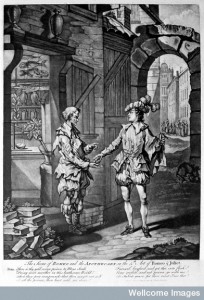 Shakespeare’s plays offer compelling cultural engagements with the implications of medical knowledge. The Nurse’s narrative of weaning in Romeo and Juliet provides more than a domestic anecdote. Medical texts observed that the influence of a nurse’s humoral milk could threaten family bonds. As a child came to resemble less its parents and more its wet-nurse, the children might prove ‘undutiful to their Parents’.[3] Juliet’s tragic tale- at least in part-engages with the consequences of disrupted family bonds. It would be too far to frame the Nurse as sole cause of Juliet’s tragedy, but her substitution for Lady Capulet’s ‘mother’ role is part of what problematises family relationships in the play.[4]
Shakespeare’s plays offer compelling cultural engagements with the implications of medical knowledge. The Nurse’s narrative of weaning in Romeo and Juliet provides more than a domestic anecdote. Medical texts observed that the influence of a nurse’s humoral milk could threaten family bonds. As a child came to resemble less its parents and more its wet-nurse, the children might prove ‘undutiful to their Parents’.[3] Juliet’s tragic tale- at least in part-engages with the consequences of disrupted family bonds. It would be too far to frame the Nurse as sole cause of Juliet’s tragedy, but her substitution for Lady Capulet’s ‘mother’ role is part of what problematises family relationships in the play.[4]
Although space to do justice to Shakespeare’s engagements with medical ideas is beyond the limits of this blog entry, these tantalizing snippets from a few plays hopefully serve to highlight how the implications of medical theory were being explored through the human interactions that were being played out on Shakespeare’s stage. Lady Macbeth is not, after all, simply a woman with masculine resolve; she is a character within a play that pointedly examines maternal influence and what it means to be ‘of woman born’ (5.7.13).
Dr Victoria Sparey is a lecturer in Renaissance Literature at the University of Exeter. Her latest article provides fresh insights into infant feeding during the Renaissance by considering the mother’s material contributions to children in the generative narrative as a whole: ‘Identity-Formation and the Breastfeeding Mother in Renaissance Generative Discourse and Shakespeare’s Coriolanus’ Social History of Medicine, 25/4, 777-794.
[1] Thomas Raynalde, The Birth of Mankinde (London, 1598), 153-4.
[2] See, for example, Jacques Guillemeau, ‘The Nursing of Children,’ in The Happy Delivery of Women (London, 1612); Jane Sharp, The Midwives Book (London, 1671), 354-362; Ambroise Paré, Works, (London, 1634), 947.
[3] Sharp, 361. Also see Henry Newcome, The Compleat Mother (London, 1695), 99.
[4] The play seems to engage with debates surrounding continental weaning practices that saw the child weaned much later than the one-year generally practiced in England. See Valerie Fildes, Breasts, Bottles and Babies: A History of Infant-Feeding (Edinburgh University Press, 1986), 370.
© Copyright Victoria Sparey all rights reserved.



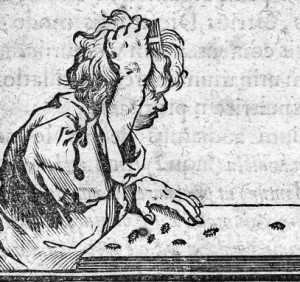
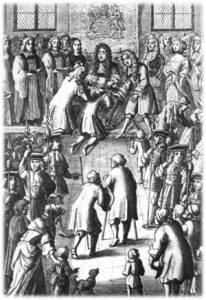
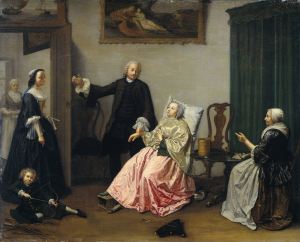
This is a fascinating post and timely for me too as I’m teaching on this topic tomorrow!
A comment made by Daniel Defoe in The Compleat English Gentleman (pub. 1890) demonstrates the sorts of thinking you’ve set out here when he claimed that Anne of Denmark had nursed her babies against the norms of the norms for aristocracy at the time
He says she argued ‘will I let my child, the child of a king, suck the milk of a subject and mingle the royal blood with the blood of a servant. No! No! The son of a king should suck none but the milk of a queen’ p. 72
In light of the associations of Juliet taking after her nurse and thus undermining her heritage as you’ve demonstrated above this fear from Queen Anne is clear too.
This is really interesting, Sara. The Body Politic is another metaphor that matters! I’ve read that some of the hostile accounts of Henrietta Maria also included fears that her Catholicism might flow into her children via her breast milk. Thanks for your comments, Vicky.
Something missing here is the importance of religion. St Paul had been decisive on the mother’s duty and this was taken up by Calvin and the English Calvinists who dominated moral theology, and especially books of household guidance, from the 1580s to the 1680s. Before 1700, it is very hard to find non-Calvinist aristocrats and gentry families where maternal breastfeeding was practised as a matter of course. English Catholic aristocrats visiting Ireland are the only notable exception.
Calvinists were followed in this by the natural theologians of the late 17th century, such as Archbishop Tillotson, who were looking to preserve Calvinist morality without using sectarian theology or biblical interpretation. With the rhetorical relabelling of advocacy, from explanations in terms of God’s general providence to the synonymous but less partisan Laws of Nature, wetnursing fell out of fashion as a voluntary choice in England, even for aristocrats. Rousseau was impressed.
A religious group that was clearly not persuaded was the Quakers. They had not been affected by Calvinist discussions of providence, nature and the body, and they remained unaffected by appeals to Nature. With hindsight, the effect of this can be seen in the distinctive rate of infant mortality among the London Quakers.
Linnaeus was so taken with the reasoning of the English, especially John Ray, that he embedded maternal breast feeding into the natural order, by inventing the category “mammals”.
Valerie Fildes almost excludes the influence of religious belief. It is medical argument that she sees as effective. This is an a priori assumption, not something directly demonstrated, whereas the influence of religious arguments on the godly is easy to identify. The Countess of Lincoln wrote a book directed at her daughter-in-law, lamenting her own failure to follow God’s law. The Countess of Manchester’s gravestone recorded how many infants she had nursed.
Henry Newcome, cited here, was the rector of Tattenhall, Cheshire. He was a Calvinist clergyman within the Church of England. His father was the leading Presbyterian of Manchester. His best friend was Dr John Tylston, the devout brother-in-law of Matthew Henry, the leading Presbyterian in Chester. Newcome consulted Tylston about the material in his book.
Medical arguments could just as easily be used as guidance on the choice of nurses, until they were more closely harnessed to God’s Laws of Nature, long used but less prominently.
Thanks David for raising this, I think many of us are familiar with the religious discussions about the right or wrong of breastfeeding in the period. This post was to raise the issue that there were other ideas tied into breast milk that came out of humoral theory. In the discussion here this is not really about persuading women to breastfeed their own children, but the implications breast milk could have on identity and how this was exploited in Shakespeare’s plays. This does of course all tie in with the larger discussions about breastfeeding and religion.
Dear David,
The role of religion in relation to breast feeding is, as you note, extremely important. Often religious and medical ideologies are combined in early modern writings. Newcome, for example, cites Galen within his argument against wet nursing, and the much-referenced idea of mothers being like pelicans (who were said to pluck their breasts in order to make them bleed and so feed their young) carried connotations of spiritual as well as bodily sacrifice. Dorothy Leigh’s Mother’s Legacy, for example, offers spiritual guidance but draws upon ideas of the blood (milk being thought of as concocted blood at the time) flowing from mother to child in a text that clearly emphasises a Mother’s spiritual role. My article on Coriolanus relates this to parallels in medical texts where indebtedness to the Mother’s blood sacrifice appears both humoral and spiritual.
The focus of this blog aims to highlight how medical ideas, particularly, are explored in Shakespeare. But, religion is certainly important in this field of study (as the work of, say, Bynum demonstrates, where the image of the bleeding Christ is linked to ideas of maternal feeding). Quakerism, which began in the English Civil War, certainly offers additional interesting insights into the field for historians looking at later in the century, although this would not have been known to Shakespeare.
Many thanks for your thoughts. Vicky
The question of religion bears on the incidence of maternal nursing. Who was breastfeeding their own children during Shakespeare’s lifetime? If hardly any affluent mothers did, what is the significance of his references?
Medical references are, of course, ubiquitous in learned Protestant discussions of the body. My suggestion is simply that medical arguments don’t do the work. If they did, the incidence would be far more widely spread.
Without more evidence, I would doubt the story about Anne of Denmark as telling us about her, as opposed to Defoe. The children were sent away from her at an early age. However, the personal and religious conflicts within the Scottish royal family and court were complex.
I too would be sceptical about Anne of Denmark based on hearsay reported by Defoe. It is significant that he makes the comment though as it must have come from somewhere and smacks of something that was trotted out by the anti-wetnurse side.
Thinking of the character of Juliet and how she has apparently inherited her wilful behaviour as a result of being nursed by a commoner for an inordinate length of time -disrupting the family bonds as Vicky describes. Most medical books said a year was long enough to nurse, some up to two, but Juliet had to be forcibly weaned at 3. Here the relevance of this plotline given that most aristocratic women didn’t nurse themselves are twofold at least. Firstly it is flagging the apparent dangers of this practice to the upper-ranking mothers for dramatic effect (what do they expect if they let their daughter be nursed this way?) and secondly, there is often an element in this sort of drama of mocking the upper-ranks for the amusement of the groundlings (look how ridiculously they behave, no wonder their kids turn out like this!).
I’m not sure that there was a pro-wetnurse side of any debate, just custom, preference and practice. The situation wasn’t like the later pro-formula vs anti-bottle debates.
Like the mothers today who resist Nature-based advice to nurse their children — different class and ideological factors in different countries — mothers and/or fathers resisted the change because the rhetoric did not connect with their beliefs or the practice was seen as distasteful or inconvenient.
The only positively pro-wetnurse comments — as opposed to medical necessity or how to choose one — which I can recall were related to the royal family’s need to maximize the number of heirs. Not that it did Queen Anne (the regnant one) much good, with her army of the dead.
I think you’re right in that it was to do with custom but there was a lot of peer pressure to have a wetnurse. There was a feeling that you might be seen as not able to afford one if you ‘allowed’ your wife to nurse her own babies, for example.
Elizabeth Clinton talks about how this idea of keeping up with the Joneses made beggars of the lower ranks as they were keen to copy their betters even when they couldn’t afford to.
Perhaps, but the Countess stood in a very particular relation to that remark. One would wish to see a less interested reference to such pressure.
This is all very interesting. My feeling is that it’s wrong to be too ready to dismiss popular engagements with medical ideas, which were commonplace and not solely understood by learned members of society. Indeed, the wet nursing/maternal feeding debate continues to need development as practice seems-as you both note- in opposition to medical and religious teachings. For me, plays contribute to these debates by exploring the implications of certain approaches to infant-feeding. The Winter’s Tale is, for example, fascinating in putting a child called Mamillius at its centre. As I argue in my article, too little attention seems to have been paid to what it might mean that a mother’s uterine blood was considered the same as breastmilk. The link is regularly noted by historians, but it is rarely seen as part of the rationale for choosing wet nursing over maternal feeding (as David says, it’s usually assumed that the contraceptive results of breast feeding led to families employing wet nurses). But a play like The Winter’s Tale sees a husband remove his son from his wife with the words ‘ I am Glad you did not nurse him’ and his explanation is that while the child shows ‘signs’ of the father, his wife has ‘too much blood in him’. The quantitative influence of the Mother’s generative blood obscures the father’s ‘dominant’ role in producing heirs. Here, medical ideas are used within the husband’s observations (elsewhere the intersection of religious/medical ideas is evident in images of innocent milk and babes). The husband’s approach in The Winter’s Tale is not endorsed by the play that clearly explores the devastating consequences of the husband’s removal of the child from its mother. This suggests, to me, an important but neglected way of considering the wet nursing debate. Just how much influence might a breastfeeding mother have over a child’s identity, and how far might this challenge ideas of male dominance in generative narratives? Coriolanus too presents a rather indomiatable mother who repeatedly reminds her son that she fed him her milk. Even if aristocratic mothers rarely breasted their children, it would be a partial vision to ignore texts that comment upon contemporary practice and the meaning of feeding practices. The Winter’s Tale, to highlight an obvious example, is clearly engaging with issues relevant to historical understandings of infant feeding in the early modern period; it is, after all, a play that calls its wetnursed character “‘small breast’, sees mother and father at odds over said child, and records the shocking death of that child. Familiar anti-wet nursing stuff. But it also offers an examination of the father’s reasoning for favouring wet nursing, and that centres on ideas of maternal blood that make perfect sense in terms of humoral theory.
best, Vicky
As I’m sure you know, I never looked back past Calvin, but Erasmus and Vives would bear investigating. Did English humanists take up their ideas on childrearing? I don’t have the materials to hand.
By the way, I recall an article by Ole Benedictow, better known for his work on plague. He found that medieval families took up maternal breastfeeding as a response to plague mortality. Iceland is also interesting, as an example of maternal feeding, but only for a relatively short period, according to Kirsten Hastrup.